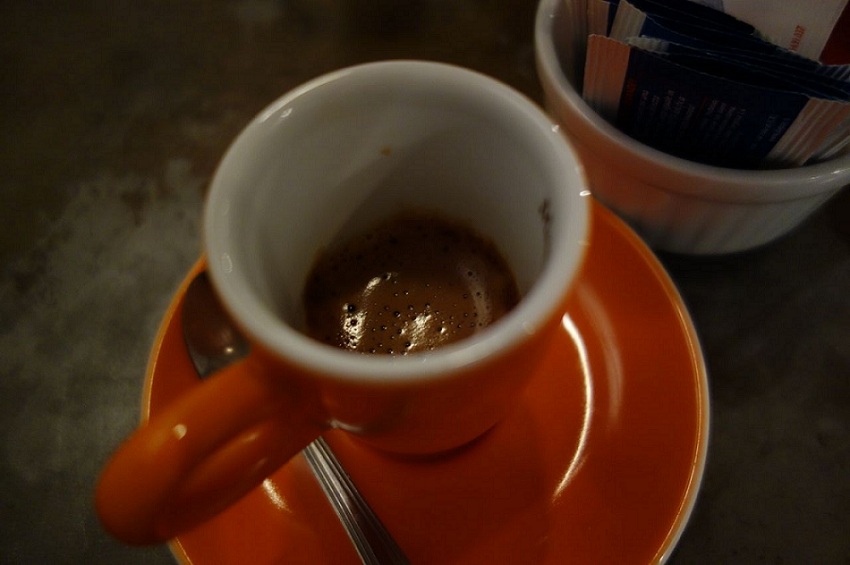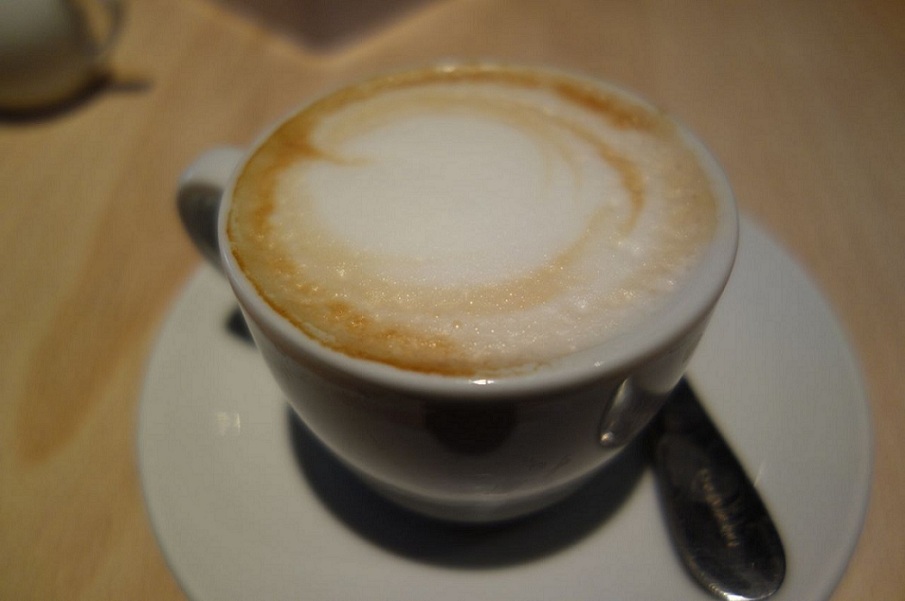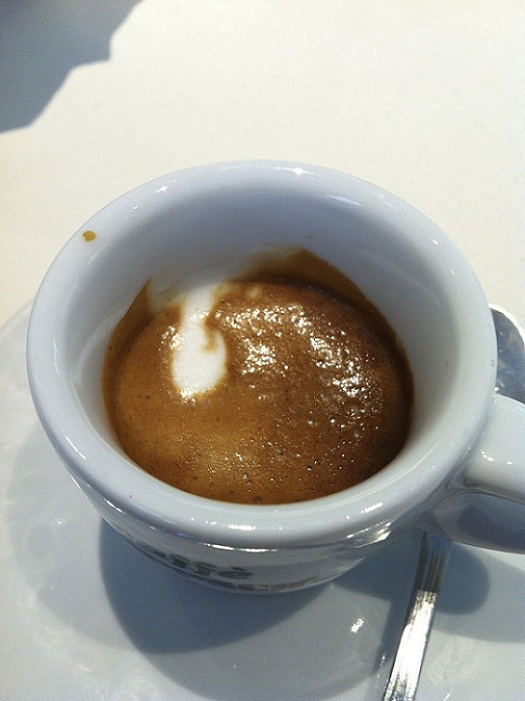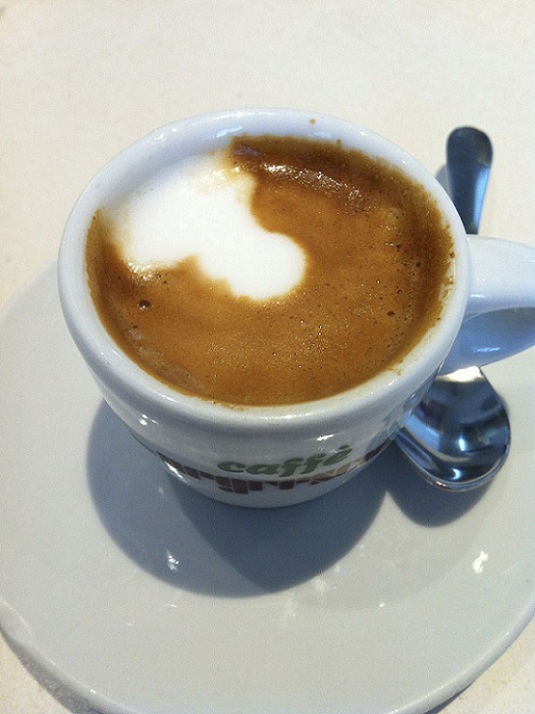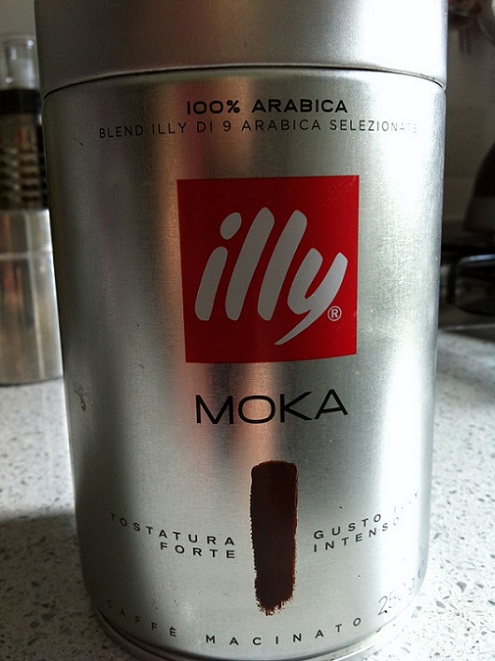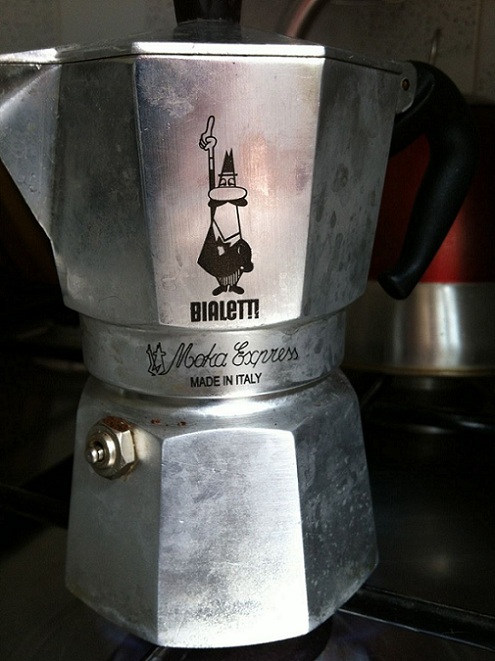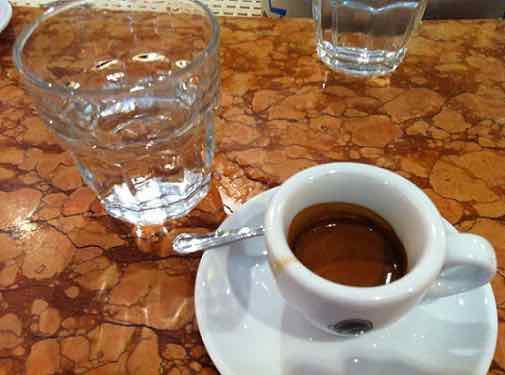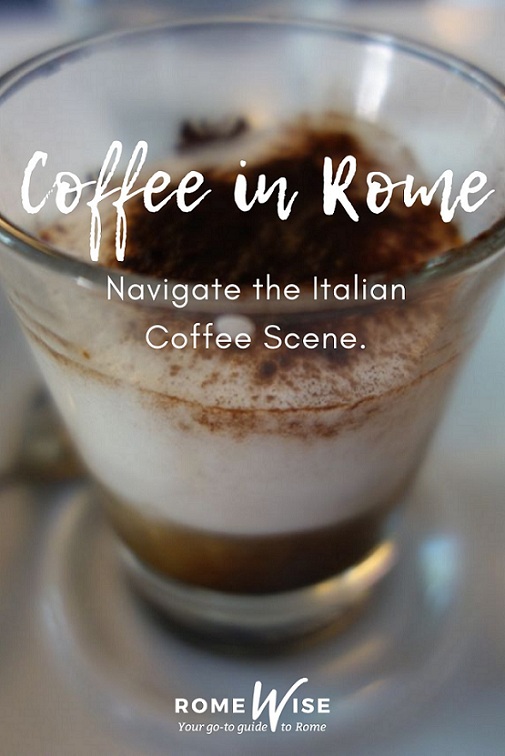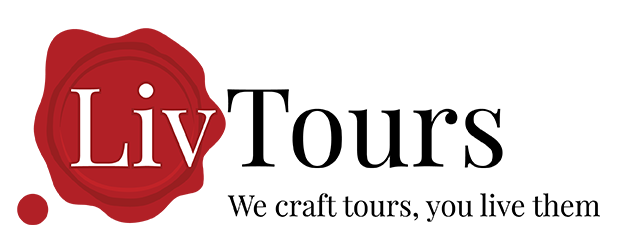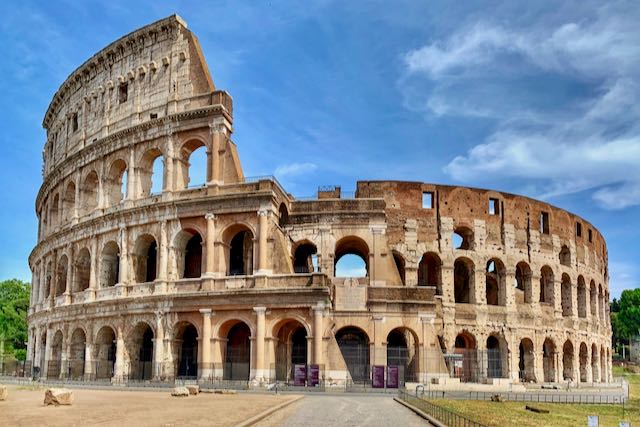- Sign up & get a FREE ebook Subscribe NOW!
- Romewise Home Page
- Drink in Rome
- Rome Coffee
Rome Coffee
Want a really good Rome coffee?
Romans take their coffee seriously, and it shows.
(Although nobody takes their coffee as seriously as they do in Naples.)
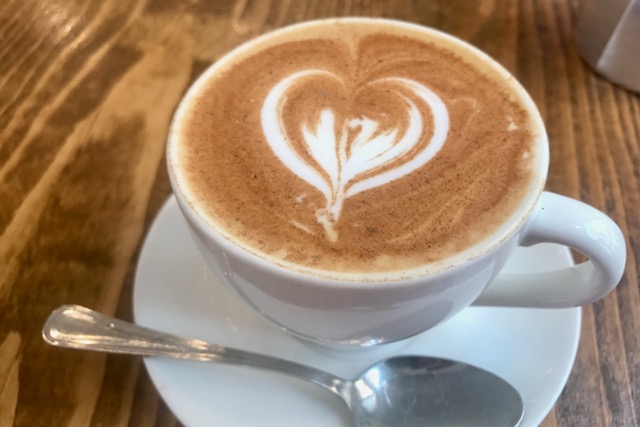 A frothy creamy cappuccino at Faro in Rome. Find how all the different ways to have coffee in Rome!
A frothy creamy cappuccino at Faro in Rome. Find how all the different ways to have coffee in Rome!There are almost endless ways to have coffee in Italy, but this page will help you navigate the Italian coffee scene a bit.
Coffee in Rome - how and where and what to order
There is a lot to know about ordering and drinking coffee in Rome, such as:
- The many variations of espresso and coffee drinks you can get in Rome
- How Italians drink coffee
- Where to buy good coffee in Rome
- What coffee to get in the summer
- Coffee misnomers and how not to order the wrong thing
- The difference between standing and sitting to have your Rome coffee. (Hint - it's a lot more expensive to sit down! Click here to go to my page on Rome Cafes and read more about the difference between standing and sitting when having your coffee.)
Rome Coffee Drinks
It’s pretty hard to have a bad coffee in Rome.
Now, which coffee to get?
The below will give you a good idea of most of the types of coffees Italians drink.
There are in fact many, many variations that include the type and size of cup or glass, and the type of milk (foamed/not foamed; boiling/hot/not hot; soy; full fat or low fat) and more (cacao on top; whipped cream on top.)
But anyway, here is a start:
- Caffe/Espresso – A caffe, or espresso is just a single shot of coffee, with very little water. The taste is intense and slightly bitter but true coffee aficionados say the only way to drink it is just like this, no sugar added. (photo above left.)
- Cappucino – Espresso with hot milk and milk foam. I always ask for “latte scremato” which is really “latte parzialmente scremato” which is low-fat milk. They often don’t have it or are out of it. But I try. You will never (at least at the time of this writing) find completely non-fat milk in a bar. It is available only at the supermarket, and even then, they sell it in tiny containers, presumably because they cannot imagine anyone would want to drink much of it. (photo above right.)
- Caffe ristretto – this is an espresso that is stopped before the water has finished dripping. So the coffee is thicker and even more intense.
- Caffe lungo – this is the opposite of ristretto: they let the water keep dripping even longer than normal, to make it more liquidy and give it a slightly less intense flavor.
- Caffe corretto – This is a less common coffee in Rome than it is in the north of Italy. It’s an espresso with a shot of alcohol. Many northern Italians have one in the morning, presumably to warm up! But you can absolutely ask for this in Rome and they will know what you mean.
- Caffe macchiato – Macchiato means “stained”, so a caffee macchiato is literally “stained coffee”, i.e. an espresso with a drop of milk. Usually the bartender will ask if you want it “macchiato caldo” or “freddo”, which means, with hot or cold milk.
- Caffe schiumato – Many Italians don’t even know this but I learned it once and get this all the time. It means, espresso with foamed milk. So there is more milk and foam than in a caffe macchiato, and less milk than in a cappuccino. It’s like a mini-cappuccino. And it always costs the same as a plain caffe. To me it is the perfect afternoon drink. Not too filling and not too harsh.
- Caffe latte – This is absolutely a morning drink. Caffe latte means coffee with a lot of hot milk (unless you ask for a caffe latte freddo, or cold.)
- Latte macchiato – Here again is the word “macchiato”, so in this case, it means the milk is “stained”, i.e. with just a drop of coffee. Unlike a caffe latte, which has a shot of espresso and lots of milk, a latte macchiato is a lot of milk with a drop of espresso, so it’s a very slightly off white color.
- Marrocchino – Ah this is another one of my favorites, especially when I want to not-so-secretly turn my coffee experience into a kind of dessert or chocolate fix. There are many variations to the marrocchino but the idea is that it’s usually served in a small glass, with a bit of foamed milk and then plenty of chocolate, either put in first as a liquid at the bottom, or poured in on top, or just heavily sprinkled on top as a powder. Some places make it with lots of chocolate syrup so taste it first before you add sugar. Here's a photo:
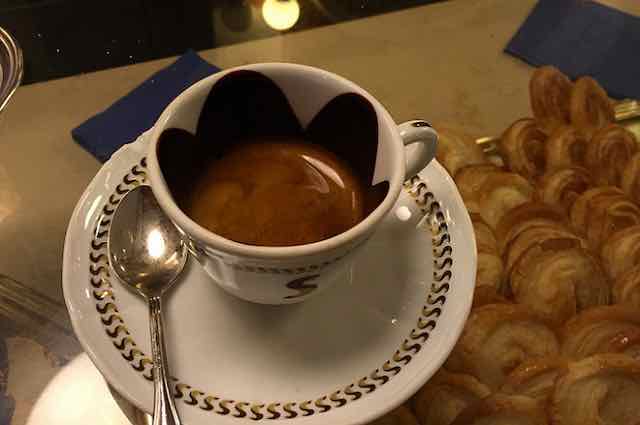 It is located in the Prati area. Great for a refined coffee at breakfast or after a meal, with classic variations. Caffè Sciascia is always full of locals on break from offices.
It is located in the Prati area. Great for a refined coffee at breakfast or after a meal, with classic variations. Caffè Sciascia is always full of locals on break from offices.- Caffe Americano – an espresso with lots of hot water added.
- Caffe Hag – decaf espresso. Called Hag because that is the standard brand of decaf espresso sold in Italy. It is pronounced “aaag.”
Ready to plan your trip?
Book your train
Planning to travel between cities in Italy and other parts of Europe?
Use Trainline to see all the different options available across the different rail companies.
Find your hotel
Find your perfect place to stay in Rome.
Use Booking.com to choose between hotels, guesthouses, and self-catering apartments in neighborhoods throughout the Eternal City.
Buy your TurboPass
Purchase the convenient Turbopass and visit all of Rome's top attractions including the Colosseum, Pantheon, and Vatican.
With one handy pass, it's all included.
Rome Coffee in Summer
Rome can get really humid and hot in the summer.
And it can seem off-putting to think about having a coffee, especially something hot like a cappuccino, when it’s sweltering outside.
But there are a number of wonderful cold coffee drinks to be had:
- Caffe freddo – There are two kinds of caffe freddo: The kind that is premade and the kind that is made on the spot. To make the pre-made kind: They make lots and lots of espresso, add a bunch of sugar and mix it up, and then put it in a plastic container with a spigot, and you can see it when you go into the bar. It’s usually next to another container that has “the freddo”, or cold tea, hopefully also home-made.
- Caffe shakerato – this is the kind of iced coffee I prefer. It’s made on the spot. They make a fresh espresso, put it in a shaker, like a martini shaker, with a few ice cubs and some sugar, and then “shake it up”, which is why it’s called “shakerato”, because they took part of the name from the English phrase. Then they pour it into a martini glass! It’s not only divine but it’s gorgeous too!
- Granita di caffe – this is a really special coffee drink and you cannot always find it. It takes a place that has the facilities to make it, such as a gelateria. It’s like “caffe freddo” but much yummier, in my opinion. They make a lot of espresso, add sugar and then stick it in the freezer. Then they keep stirring it until it turns to ice crystals. So what makes a granita di caffe so delicious is that the ice crystals are made from coffee! You can order it with whipped cream on top too.
Jump start your trip to Rome with a free ebook 😀
Sign-up to our free newsletter and receive our Quick Start Guide to Rome ebook which share's everything you need to know to plan the perfect trip to the Eternal City 🙌
Rome Coffee - Misnomers
- Latte – This is not actually a misnomer. Latte means “milk.” Literally, milk. In other parts of the world, some people have taken to calling a “caffe latte” simply a latte. But if you ask for a latte in Rome, you will get a glass of milk.
- Mocha – This is not a coffee drink you will find in Rome or anywhere else in Italy to my knowledge. What we think of as a mix of hot chocolate and coffee doesn’t exist here. But a “moka” is the type of coffee pot used to make an espresso, usually at home, so if you ask an Italian for a “mocha”, they will think you want them to use their little coffee pot to make you an espresso.
Substitutions and Additions
- Orzo – A caffe d’orzo is not a coffee, but a drink of malt, like Ovaltine. Most people ask for it “in tazza grande”, in a large cup, because it is usually made with more water so it’s a bigger drink.
- Soia – My husband loves to get cappuccino di soia. This is cappuccino with soy milk instead of dairy milk. Almost all bars will do this for you.
- Ginseng – Ginseng coffee took hold a few years ago, and now you can find it everywhere.
- Coffee’d sugar –Some bars have, sitting on the counter, a bowl of coffee’d sugar (I don’t know if that is a word but how else to describe it?) It is sugar that has been imbued with coffee. It’s like a whipped coffee/sugar blend. Dollop some into your coffee, and your drink will taste not only sweet but even more coffee-esque.
Do you want to make a pot of Italian espresso at home? If you have a Bialetti moka maker or similar, you can have Italian coffee at home, like the Romans do. Here's how.
Disclosure: If you make a purchase through a link on this page, I may receive a small commission - at no extra cost to you. Thank you for supporting my site!
Italian Coffee Habits
This hilarious video (made by Italian Bruno Bozzetto) highlights a lot of differences between Italians and other Europeans.
At 3:39 minutes you can watch how Italians have turned ordering coffee into an art form.

Maybe you have heard that Italians don’t drink cappuccino after 11am.
It’s not quite true.
Many Italians I know drink cappuccino in the afternoon, just never ever directly after a meal.
In fact, a hot cappuccino on a blustery winter afternoon does just the trick for warming you up!
Many Italians drink some kind of coffee or hot drink (maybe hot chocolate, or “orzo” which is malt, kind of like Ovaltine), in the morning for breakfast.
Even if they have one at home before leaving for work, there will inevitably be the 9am coffee break.
This is a time for the second real wakeup coffee, and a chance for a little schmoozing with friends, co-workers or even the barman.
Walk into any bar in Rome between 9 and 9:30am and you will be hard pressed to find an inch of space at the counter.
After lunch or dinner, many Italians will ask for a “caffe”, wherever they ate, whether at a restaurant, tavola calda or bar.
This is just a way to end the meal and is almost always a simple espresso, never a cappuccino.
A cappuccino is full of hot, whole-fat milk.
Even if you ask for, and can get, low-fat milk for your cappuccino, it is still a lot of hot milk.
A drink of hot milk is really filling, so for Italians, the idea of having something so filling after a meal is unappealing.
In the mid-late afternoon, some Italians will stop by a Rome cafe for an afternoon “caffe.”
This is often just from habit, but also is a way of conducting a social or work event.
“Let’s go get a coffee” is a common way to say, “let’s go finalize this deal” or, “let’s go talk about this issue.”
The perfect 3-day itinerary in Rome
Trying to figure out how to organize your visit to Rome? I've got the perfect 3-day itinerary for first-time visitors (or those who have not been here in a while.) It works for a 2.5 day visit as well.
In my 3-day itinerary, you'll see all the major must-see Rome attractions like the Vatican, Colosseum, Trevi Fountain, Pantheon, Piazza Navona, Spanish Steps, and much more.
And if you have more time, or want suggestions for extra/other things to do, you'll find that there too.
Visit my page with the best 3-day itinerary in Rome for first-timers.
Where to Buy Good Coffee in Rome
You are visiting Rome, and you want to take home a souvenir, or perhaps a gift for someone.
A great idea is to bring some whole coffee beans, or better yet, chocolate covered coffee beans!
(I always make sure my dad has a stash in the freezer.)
If you get a small bag, it doesn’t weigh much, it won’t break in your luggage and, as a plus, your luggage will smell divine when you get home!
To get fresh-roasted coffee in Rome, you should find what is called a “torrefazione.”
This is a coffee-roaster.
- An excellent option is Trombetta, which is right next to Termini station on via Marsala.
- Another is Castroni, which has several outposts around Rome. Castroni is a coffee bar, torrefazione and also a sort of gourmet grocery store. They sell all kinds of special food products which can also be great gifts or souvenirs. In fact, many of us expats go there to get our cranberry juice, karo syrup and other very hard to find American or British products.
- A well-known and excellent choice is also Tazza D’Oro, which is near the Pantheon.
- And their competitor, Caffe Sant'Eustacchio, is also a torrefazione, and a great place to get some gifts.
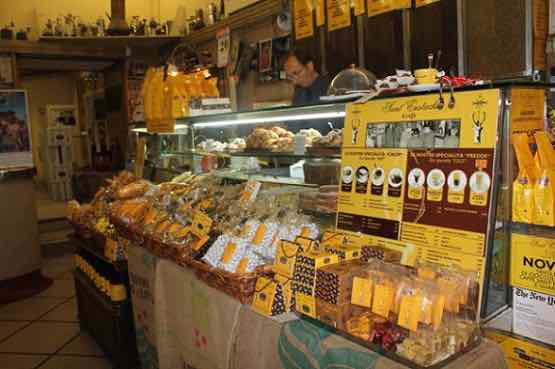 It all began in the 1930s. Even then, at Sant'Eustachio Cafe, locals could buy dozens of different blends. The tradition of high-quality coffee continues today.
It all began in the 1930s. Even then, at Sant'Eustachio Cafe, locals could buy dozens of different blends. The tradition of high-quality coffee continues today.Naples Way of Drinking Coffee
This is just an aside, because it’s not quite about drinking Rome coffee.
I think the coffee culture in Naples is fascinating and worth sharing, because nobody is more serious about their coffee than the Napoletani.
In Naples, when you go into a bar, you will see the coffee cups sitting upside down in boiling water.
So when they serve you the coffee, you will have the hottest cup possible.
They always ask if you want it “dolce” or not, i.e. with the sugar already in it.
You are meant to drink it without sugar but they will deign to give it to you if you must have it.
Then, when they serve you coffee, it always comes with a small glass of water.
You must drink this FIRST and never ever after the coffee.
It is considered that if you drink water after you drink coffee, you completely ruin the whole experience.
Romewise's Top Travel Resources
Ready to book your trip to Rome? Take a look at these helpful links to companies we use and trust:
- Keep your travel spending simple with the Wise card, which removes all the worry about exchange rates and high transaction fees all over the world
- Search for and book your perfect accommodation
- Our complete guide to what to pack for Rome
- The number one travel accessory, a multi-point travel adapter and voltage converter
- Browse a huge range of tours in Rome and beyond
- Experience unique tours and special access to Rome's most popular sights
- Protect yourself with comprehensive travel insurance
Within this post there are some affiliate links for products and services. For more details about our affiliate policy click here.
Get your 100% free Rome trip planner now!
Simply sign-up today for our free newsletter and get the Romewise Quick Start guide to Rome:
We are committed to respecting your data. Click for our Privacy Policy.
Comments? Questions? Suggestions?
Please come over to the private Romewise Facebook group and join in the conversation.
You will often find me there, happy to answer your questions / comments!
You will also meet other Rome lovers and experts, too.
What are you waiting for?
- Romewise Home Page
- Drink in Rome
- Rome Coffee

